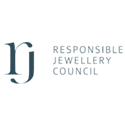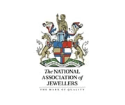Gold has long been a symbol of wealth, power, and divine beauty, woven into the very fabric of human history and culture. From the regal crowns of ancient kings to the dazzling accessories that grace modern red carpets, gold’s allure has transcended centuries and continents. In the fashion industry, this precious metal holds a special place, not only for its intrinsic value but also for its ability to transform a simple outfit into a statement of luxury and style.
In this exploration, we delve into the fascinating journey of gold within the fashion world. We will trace its historical roots from ancient civilizations where it adorned the elite, through the flamboyant eras of European royalty, to its current status as a staple in the collections of contemporary designers. Beyond its glittering presence, gold’s impact on fashion trends reveals much about societal trends and shifts, reflecting economic climates, cultural exchanges, and evolving tastes.
As we uncover the golden threads woven through the history of fashion, we invite you to discover how this timeless element continues to shape trends, inspire designers, and capture the imagination of fashion enthusiasts around the globe.
The Historical Perspective
Gold has been a coveted resource throughout human history, not only for its monetary value but also for its decorative appeal. This section explores how gold, as a symbol of wealth and divine favour, played a pivotal role in shaping fashion trends across various ancient civilizations, leading up to its influential presence in European fashion during the Renaissance and Baroque periods.
Ancient Civilizations
In ancient Egypt, gold was not merely a metal; it was the flesh of the gods, worn by the pharaohs and queens to assert their divine authority and eternal status. Jewellery, headdresses, and even garments woven with gold threads were common among the elite, often buried with them to carry their status into the afterlife. Similarly, in ancient Greece and Rome, gold was a marker of social status. It adorned the clothing and accessories of the aristocracy, highlighting their power and position in society.
Emperor Taizong of Tang, in his golden cloak, depicted on stamps and celebrated still to this day
Across the seas in Asia, gold held significant cultural importance in China and India. The Chinese emperors incorporated gold into their ceremonial attire as a display of supreme dignity and power. In India, gold has been integral to the culture for millennia, heavily used in bridal wear and daily attire, symbolising prosperity and good fortune.
The Renaissance and Baroque Era
Moving into the Renaissance, Europe saw a resurgence of gold in fashion. As trade routes expanded and wealth increased, gold became more accessible to the artisans and fashion designers of the time. It was a period of artistic flourishing, and gold played a central role in the opulence of the era. Garments were embroidered with gold threads, and even the fabrics themselves were interwoven with gold, reflecting the light with every movement and dazzling onlookers.
Garments from the Renaissance were often richly detailed with gold lace and thread
The Baroque period took this opulence to even greater heights. Gold-laced fabrics and heavy gold embroidery were symbols of wealth and extravagance. The fashion of the time was characterised by dramatic, detailed, and luxurious designs, with gold thread playing a crucial role in the elaborate patterns that adorned the garments of European royalty and nobility.
Gold in Modern Fashion
As we transition from the historical opulence of gold in ancient civilizations and the European aristocracy, we now explore its resurgence and evolution in 20th and 21st-century fashion. This period marks a significant shift, as gold becomes not only a feature of haute couture but also a prominent element in mainstream fashion and pop culture.
The 20th Century Revival
The 20th century witnessed several pivotal moments where gold significantly impacted fashion trends. The glamour of the 1920s and 1930s introduced gold in flapper dresses and elegant evening wear, often complemented by elaborate gold accessories and jewellery. This era was marked by a desire to dazzle, a trend that was revived and magnified in the post-war 1950s and 1960s. Designers like Christian Dior and Coco Chanel incorporated gold in their designs, bringing a touch of luxury and resilience that mirrored society’s celebratory mood after years of austerity.
Bygonely / Marilyn Monroe in her famous gold lamé gown
Perhaps one of the most iconic moments in fashion history was Marilyn Monroe’s performance in “Gentlemen Prefer Blondes,” where she donned a stunning gold lamé gown. This not only symbolised the height of Hollywood glamour but also cemented gold’s role in the portrayal of allure and sophistication in the public consciousness.
Contemporary Trends
In more recent decades, the use of gold in fashion has diversified even further, mirroring broader social and cultural trends. Today, gold is not confined to jewellery and embellishments but is a key element in the overall design of garments. Designers such as Gianni Versace and Alexander McQueen have been known for their bold, artistic expressions using gold, often blending traditional luxury with modern aesthetics.
Tamara Bellis / A woman wearing a modern party dress that is adorned in gold
The late 20th and early 21st centuries also saw the advent of metallic fabrics that mimic the sheen of real gold. These materials are used in everything from casual wear to high-end fashion, demonstrating gold’s versatility. Gold detailing, such as buttons, zippers, and trimmings, adds a subtle but powerful statement to everyday apparel, making luxury accessible and prevalent in daily life.
Gold in Street Fashion
Furthermore, gold has taken a prominent place in street fashion, influenced heavily by hip-hop culture in the 1980s and 1990s. Gold chains, watches, and rings became symbols of success and prestige within the community, influencing broader fashion trends. This adoption of gold in streetwear illustrates its transition from a traditional symbol of opulence to a modern emblem of cultural identity and self-expression.
Gold Jewellery Trends
Gold’s transformative influence extends powerfully into the realm of jewellery, where its presence has shaped styles and trends across generations. This section delves into the evolution of gold jewellery, highlighting its timeless appeal and the cyclic nature of its trends, which continue to captivate and adorn fashion enthusiasts worldwide.
Timeless Appeal
A beautiful golden bangle from Sylvera
Gold jewellery has always been a staple in both personal adornment and cultural expression. Classic pieces like the gold hoop earrings, bangles, and signet rings have stood the test of time, cherished for their durability and elegance. The allure of gold jewellery lies in its ability to complement any outfit, enhancing the wearer’s natural beauty without overwhelming it. Such pieces are not only investments but are often cherished as family heirlooms, passed down through generations.
Evolving Designs
As fashion trends have shifted, so too have the styles of gold jewellery. The 1980s and 1990s saw a surge in the popularity of chunky, bold gold pieces, reflecting the extravagant styles of the time. In contrast, the early 2000s marked a shift towards more minimalist, delicate gold jewellery, with fine chains and small pendants becoming the trend.
Today, there is a notable return to bold and intricate designs, with a modern twist. Designers are innovating by incorporating mixed metals, integrating gold with silver or rose gold, and experimenting with unconventional shapes and textures. These contemporary designs reflect a fusion of traditional craftsmanship with modern aesthetic sensibilities, catering to a diverse range of tastes.
Sustainable and Ethical Trends
In recent years, the gold jewellery industry has also seen a significant shift toward sustainability and ethical sourcing. Consumers are increasingly aware of the environmental and social impact of gold mining. In response, many new and established jewellery brands are committing to the use of recycled gold and ensuring that new gold is sourced responsibly. This shift is not only a response to consumer demand but also aligns with a broader industry trend towards sustainability in fashion.
Celebrity Influence
Celebrities continue to play a crucial role in setting gold jewellery trends. High-profile events like the Oscars and the Met Gala showcase spectacular gold jewellery pieces that often set the trend for the coming year. The influence of celebrities extends beyond the red carpet, as their everyday and event-specific jewellery choices frequently dictate market trends and consumer preferences.
Technological and Sustainable Perspectives
The intersection of technology and sustainability is reshaping the use of gold in fashion, particularly in fabric manufacturing and ethical sourcing. This section explores these innovative approaches and how they are contributing to a more sustainable fashion industry, while still preserving the luxury and appeal of gold.
Innovations in Gold Fabric Manufacturing
Advancements in textile technology have allowed for the creation of gold-infused fabrics that maintain the metal’s lustre while offering new levels of flexibility and comfort. These innovations include the development of ultra-thin gold threads that can be woven into fabrics without compromising their softness or wearability. Such materials are being used not only in high-fashion garments but also in more accessible fashion lines, broadening the reach of gold in everyday apparel.
Emerging technologies like nanotechnology are also being applied to develop gold coatings that are durable and lightweight, allowing for the creation of gold-enhanced fabrics that are both functional and fashionable. These technological advances are opening up new possibilities for designers to explore gold’s aesthetic qualities in various forms of apparel.
Gold Recycling in Fashion
As the fashion industry faces increasing pressure to reduce its environmental footprint, the focus on gold recycling has intensified. Gold is a highly recyclable material, and its recovery from electronic waste and old jewellery has become a significant source of the gold used in new fashion products. This process not only helps reduce the demand for newly mined gold but also minimises the overall environmental impact associated with gold extraction.
Many fashion brands are now highlighting their commitment to using recycled gold as a key component of their sustainability strategies. This practice not only appeals to environmentally conscious consumers but also aligns with global sustainability goals, providing a model for circular economy practices in the fashion industry.
Ethical Sourcing and Transparency
The ethical sourcing of gold is becoming a critical concern for fashion designers and brands. This involves ensuring that the gold used in their products is sourced from mines that adhere to strict environmental and labour standards. Brands are increasingly required to provide transparency in their gold supply chains, often supported by certifications from credible organisations that monitor the ethical extraction and trade of gold.
To meet these demands, many companies are turning to blockchain technology to track the journey of gold from the mine to the market. This allows consumers to verify the origins of the gold used in their fashion items, ensuring that their purchases are contributing to ethical practices in the industry.
The Bright Future
The future of gold in the fashion industry appears vibrant and dynamic, driven by both ongoing trends and emerging influences. This section looks ahead to explore how current economic, cultural, and social indicators suggest potential developments for gold’s role in fashion, and how the industry might evolve to meet new challenges and opportunities.
Economic Influences on Gold Usage
The economic landscape plays a significant role in dictating the availability and use of gold in fashion. As global economies fluctuate, so too does the price of gold, which can impact how designers and manufacturers incorporate this precious metal into their products. In times of economic downturn, gold can become a symbol of stability and resilience, often seeing a resurgence in popularity as an investment in both financial and aesthetic terms.
Moreover, as developing economies grow, new markets for gold jewellery and fashion items expand. This is particularly evident in countries like China and India, where gold has deep cultural significance and its demand in fashion continues to rise alongside economic growth.
Cultural Trends Shaping Gold’s Future
Culturally, gold remains a potent symbol of status, wealth, and tradition, but it is also being reinterpreted through modern lenses. Younger generations are looking for ways to blend tradition with contemporary style, leading to innovative uses of gold in fashion that resonate with modern values and lifestyles. This includes minimalist designs that emphasise ethical sourcing and sustainability, as well as hybrid designs that mix gold with less traditional materials.
In addition, the influence of global pop culture, especially from regions like Korea and India, where gold is prominently featured in entertainment and media, continues to impact fashion trends worldwide. These cultural exchanges are creating a more diverse and rich landscape for gold fashion, encouraging cross-cultural designs that appeal to a global audience.
Technological Advancements and Gold
Technology will continue to play a crucial role in shaping the future of gold in fashion. Advancements in material science may lead to new ways of integrating gold into textiles, making gold-infused fabrics more durable, lightweight, and versatile. Furthermore, digital fashion and virtual reality platforms offer new realms where gold can be showcased, impacting real-world trends and opening up new markets for virtual gold fashion items.
Sustainability and Ethical Practices
Sustainability will remain at the forefront of the fashion industry’s evolution. As consumers become increasingly aware of environmental and ethical issues, the pressure on brands to demonstrate responsibility in their gold sourcing and processing will intensify. This will likely drive further innovations in gold recycling and the adoption of technologies that provide transparency and traceability in gold supply chains.
Throughout this exploration of gold’s impact on the fashion industry, we have traced its journey from ancient symbols of divinity and power to modern icons of style and sustainability. Gold’s timeless appeal, combined with its adaptability to cultural shifts and technological advancements, underscores its enduring presence in the world of fashion. This relationship not only enhances the aesthetic value of fashion items but also significantly influences their economic and intrinsic worth, making gold a compelling investment opportunity.
Gold’s integration into fashion transcends mere decoration; it is deeply embedded in the industry’s fabric, driving trends and setting standards for luxury and elegance. As fashion continues to evolve, gold remains a constant, its value appreciating not only due to its rarity and universal appeal but also because of its cultural significance across generations and geographies. This aspect makes investing in gold-laden fashion items particularly attractive, as these pieces often retain or increase in value over time, especially when they are well-crafted or hold historical significance.
Moreover, the shift towards sustainability in the fashion industry highlights another dimension of gold as a sound investment. With an increasing focus on ethical sourcing and recycling, gold is at the forefront of this movement. Items made with responsibly sourced or recycled gold are gaining preference among consumers, potentially offering higher resale values in the future due to their reduced environmental footprint and ethical appeal.
Recent articles
Gold Rallies Ahead of the PCE Index Release
“The El Dorado of the Seas”: The remaining allure of shipwrecks and lost treasure
The Role of Gold in Sanctions and Economic Warfare
Gold and Geopolitics: How Global Tensions Influence Gold Prices















